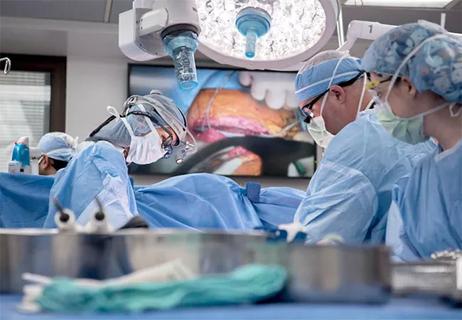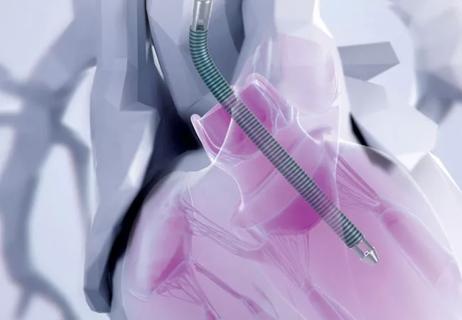A scannable graphic recap of our latest data
Below we share recent volumes and clinical outcomes for leading cardiac surgery categories in Cleveland Clinic’s Heart, Vascular and Thoracic Institute.
Advertisement
Cleveland Clinic is a non-profit academic medical center. Advertising on our site helps support our mission. We do not endorse non-Cleveland Clinic products or services. Policy
Over the past 18 years, mortality for adult cardiac surgery procedures at Cleveland Clinic has substantially trended downward even as volumes rise and case complexity increases.

Cleveland Clinic received the highest Composite Quality Rating (three stars) for these operations in the latest Society of Thoracic Surgeons (STS) Adult Cardiac Surgery Database report, for the three-year period ending in June 2024:

CABG = coronary artery bypass grafting; AVR = aortic valve replacement; MVRR = mitral valve repair/replacement
| Procedure/Volume | Cleveland Clinic Observed | STS Expected |
|---|---|---|
| Isolated CABG (N = 994) | 0.8% | 1.2% |
| Isolated AVR (N = 382) | 0.0% | 1.5% |
| AVR + CABG (N = 171) | 1.8% | 3.7% |
| Isolated MV replacement (N = 181) | 1.1% | 3.4% |
| MV replacement + CABG (N = 59) | 0.0% | 6.4% |
| Isolated MV repair (N = 460) | 0.2% | 0.6% |
| MV repair + CABG (N = 144) | 1.4% | 3.8% |
| Procedure/Volume | ||
| Isolated CABG (N = 994) | ||
| Cleveland Clinic Observed | ||
| 0.8% | ||
| STS Expected | ||
| 1.2% | ||
| Isolated AVR (N = 382) | ||
| Cleveland Clinic Observed | ||
| 0.0% | ||
| STS Expected | ||
| 1.5% | ||
| AVR + CABG (N = 171) | ||
| Cleveland Clinic Observed | ||
| 1.8% | ||
| STS Expected | ||
| 3.7% | ||
| Isolated MV replacement (N = 181) | ||
| Cleveland Clinic Observed | ||
| 1.1% | ||
| STS Expected | ||
| 3.4% | ||
| MV replacement + CABG (N = 59) | ||
| Cleveland Clinic Observed | ||
| 0.0% | ||
| STS Expected | ||
| 6.4% | ||
| Isolated MV repair (N = 460) | ||
| Cleveland Clinic Observed | ||
| 0.2% | ||
| STS Expected | ||
| 0.6% | ||
| MV repair + CABG (N = 144) | ||
| Cleveland Clinic Observed | ||
| 1.4% | ||
| STS Expected | ||
| 3.8% |
*From 1/1/24 through 12/31/24.
STS = Society of Thoracic Surgeons; CABG = coronary artery bypass grafting; AVR = aortic valve replacement; MV = mitral valve
operative mortality for isolated surgical AVR in 2024 (N = 382)
(vs. 1.5% STS predicted mortality)
operative mortality for surgical AVR + CABG in 2024 (N = 171)
(vs. 3.7% STS predicted mortality)
procedural mortality for transcatheter AVR in 2024 (N = 667)
(no predicted rate available)
operative mortality in 2024 (N = 460)
(vs. 0.6% STS predicted mortality)
operative mortality in 2024 (N = 181)
(vs. 3.4% STS predicted mortality)
operative mortality in 2024 (N = 1,379)
(no predicted rate available)
operative mortality for elective cases in 2024 (N = 1,143)
(no predicted rate available)
*Aorta surgery data are from the STS Adult Cardiac Surgery Database and do not include vascular surgery cases.
STS = Society of Thoracic Surgeons; CABG = coronary artery bypass grafting
Cleveland Clinic Thoracic and Cardiovascular Surgery Chair Marc Gillinov, MD, recently gave a high-level overview of 2024 volumes and outcomes in adult cardiac surgery at Cleveland Clinic's most recent Thoracic and Cardiovascular Surgery Annual Report. Watch his 3.5-minute presentation in the video below.
Advertisement
To explore more presentations from Cleveland Clinic's Thoracic and Cardiovascular Surgery Annual Report -- including volume/outcome overviews in valve, aorta, coronary artery and reoperative surgeries -- click here.
Advertisement
Advertisement

A scannable recap of our latest data in these clinical areas

Custom STS risk model improves ability to predict 30-day survival for a growing population

Series of 145 patients characterizes scope of presentations, interventions and outcomes

Experience-based takes on valve-sparing root replacement from two expert surgeons

New review distills insights and best practices from a high-volume center

Recent Cleveland Clinic experience reveals hundreds of cases with anatomic constraints to FEVAR

30-year study of Cleveland Clinic experience shows clear improvement from year 2000 onward

Surgeons credit good outcomes to experience with complex cases and team approach